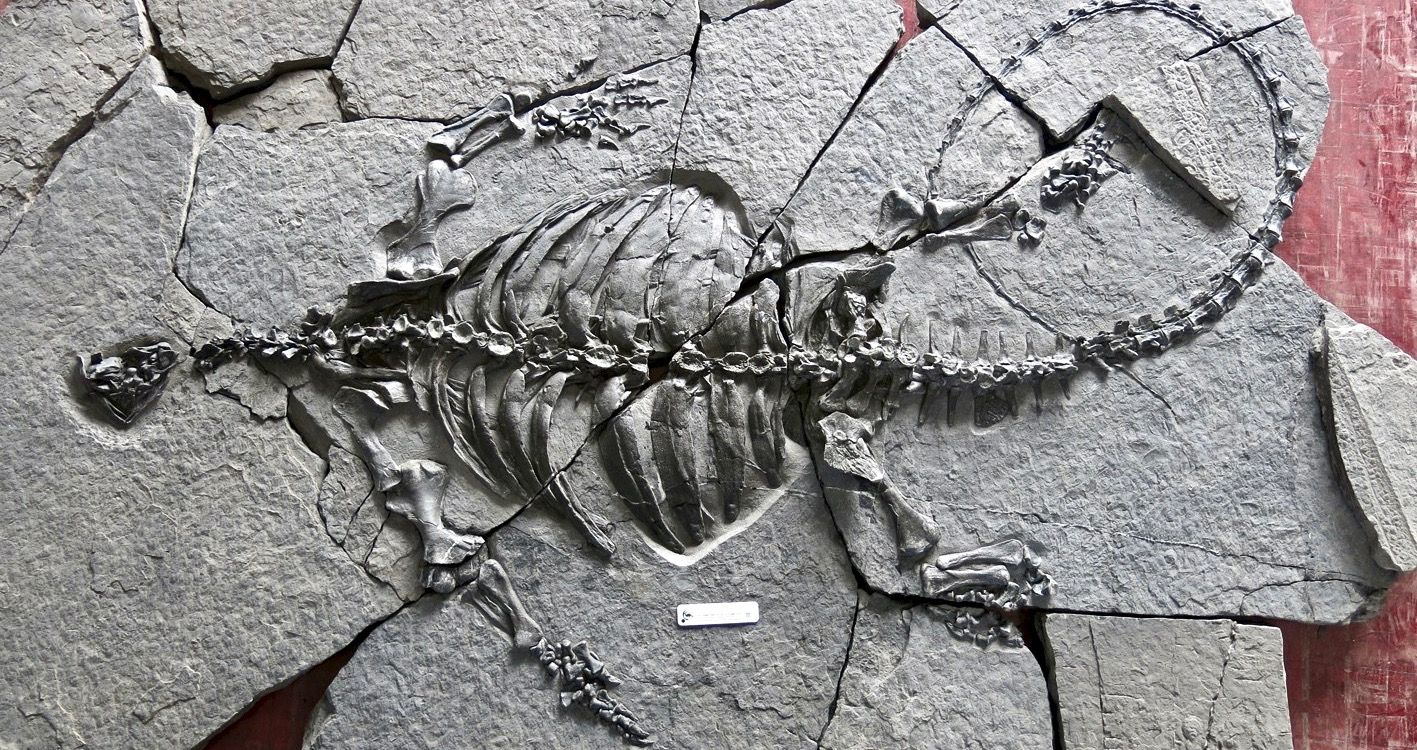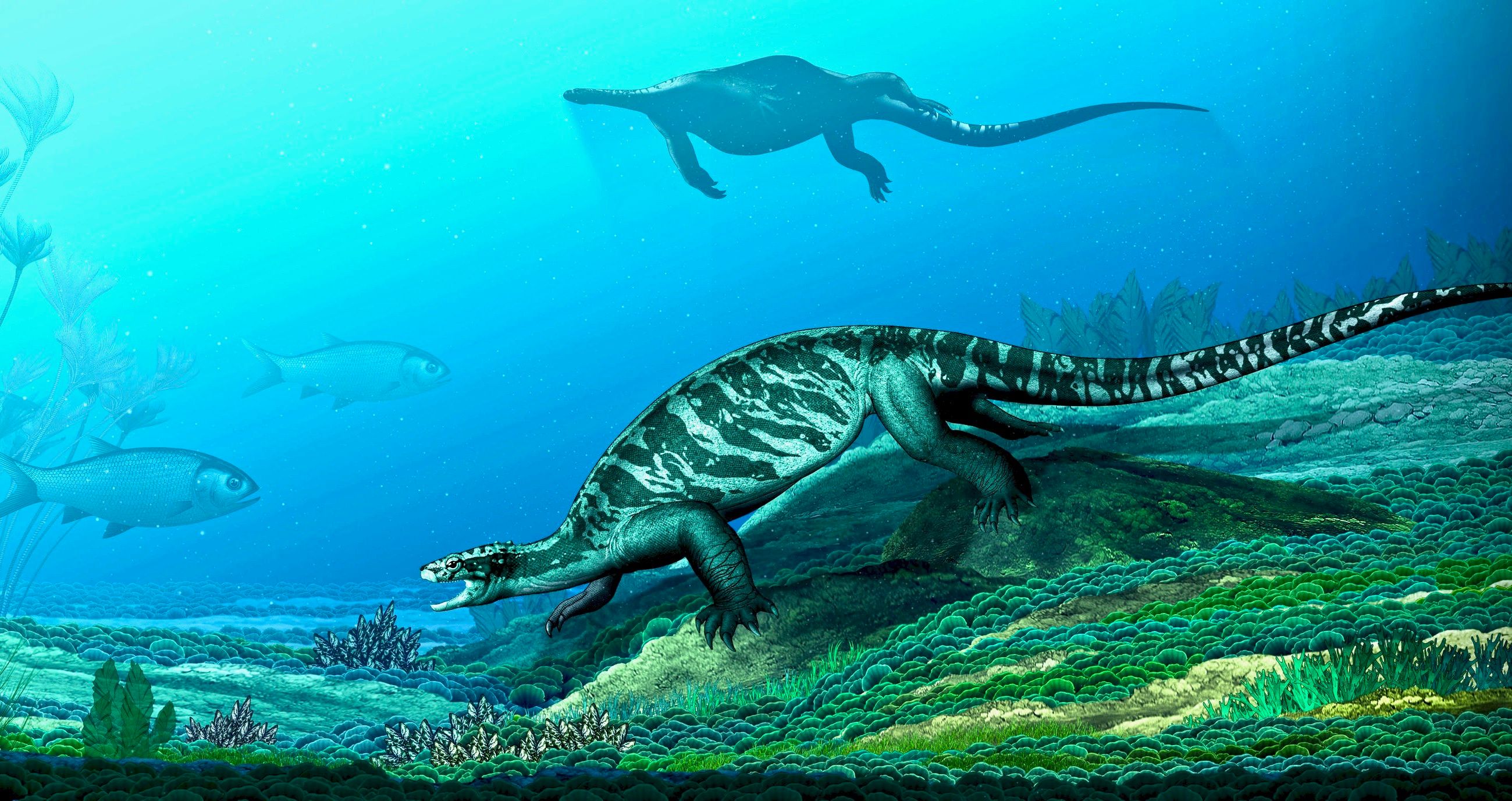A new fossil discovered in China shows what turtles looked like millions of years ago. The nearly complete, perfectly preserved fossil reveals a reptile larger than a human being, with a disc-shaped body, no shell and the hint of a turtle-like beak.
The unearthed early turtle "unfolds the early history of turtles one step," said Xiao-Chun Wu, a paleobiologist and research scientist at the Canadian Museum of Nature, who co-authored a new study, published earlier this week in the journal Nature, with colleagues from China, the US, and the UK.
The study was funded by the Institute of Vertebrate Paleontology and Paleoanthropology, the Chinese Academy of Sciences, National Museums Scotland, the Field Museum and the Canadian Museum of Nature.
Eorhynchochelys sinensis, meaning "dawn-beaked turtle from China," existed roughly 228 million years ago, during the Triassic, when marine reptiles like crocodiles, ichthyosaurs, and relatives of plesiosaurs ruled the seas.
The early turtle measured 2.5 meters in length, had a very long tail, and lived near shorelines and the mouths of rivers, Wu said. The reptile, which had broad ribs, a flattened, turtle-like shape, and strong limbs, was well-suited to dig in the mud in order to bury its eggs, forage for food or to hide for safety on the bottom of shallow shoreline waters.
It's the earliest turtle fossil ever found that shows signs of a turtle-like beak, making up the front half of its mouth. Meanwhile, the back was full of teeth that are missing from modern-day turtles. Wu said the reptile probably ate fish or other marine foods.
The research team had found a turtle near the same site in 2008 that lived eight million years later with a half shell covering its belly, but no shell on its back. That turtle also lacked a beak. A comparison of the newly found fossil to earlier turtle fossils shows that some features, like the beak, may have evolved, disappeared and reappeared before turtles developed their current body.
Given that turtle fossils tend to be rare, the evolution of the reptile is still a mystery, though the new fossil has helped fill in the blanks.
"It is important because it's an intermediate step in the evolution of the turtle body plan," said Olivier Rieppel, curator of evolutionary biology at the Field Museum in Chicago and a co-author of the paper. He said he was "absolutely stunned" when he saw pictures of the new fossil.
The fossil was found by a farmer in Guizhou Province in China in 2015, at a quarry where Wu and the other authors had been searching for fossils since the 1990s. After Wu and his colleagues left, they asked local farmers to keep looking for fossils. A few of the finds have been set aside to form part of the new Sanya Museum of Marine Paleontology that is being built in Hainan Province.
Wu said that in Canada there are marine sediments from the Triassic in the Peace River and Wapta Lake regions of British Columbia, where turtle fossils may be found. Darla Zelenitsky, a paleontologist at the University of Calgary who discovered a pregnant turtle fossil in Alberta a decade ago, called the new discovery, an "interesting and unexpected" one.
RELATED: 150 Pound Sea Turtle Healthy And Released
"That said, with so few fossils known for early turtles and the uniqueness of these animals," she wrote in an email, "our understanding of their early evolution can be challenged or even overturned with each new discovery."
Tiago Simoes, a University of Alberta researcher, who has published a detailed evolutionary timeline for reptiles, said the new information may help researchers place the new discovery more accurately on the tree of life. Simoes added that the study shed "important new insights into the evolution of the turtle body plan" and how turtles connect to other reptiles.


